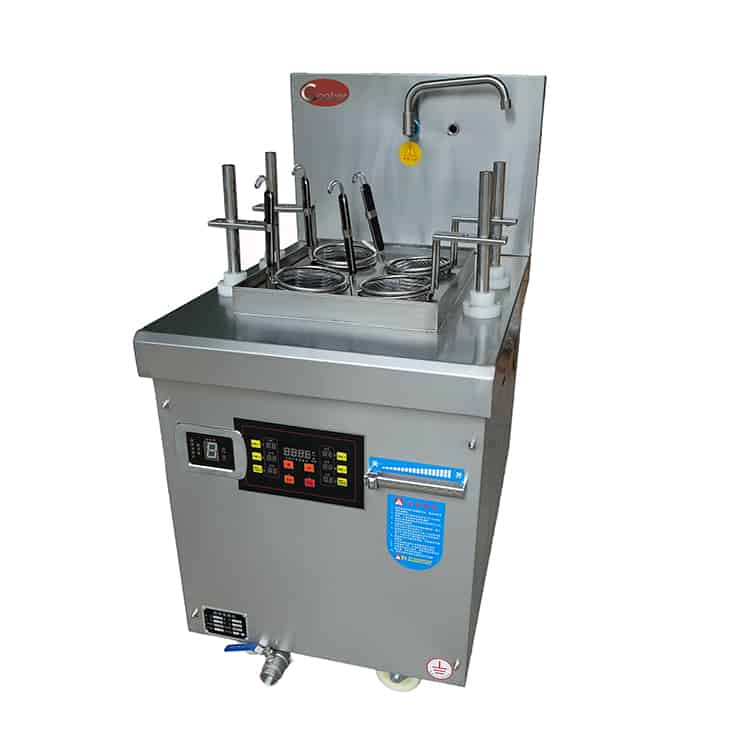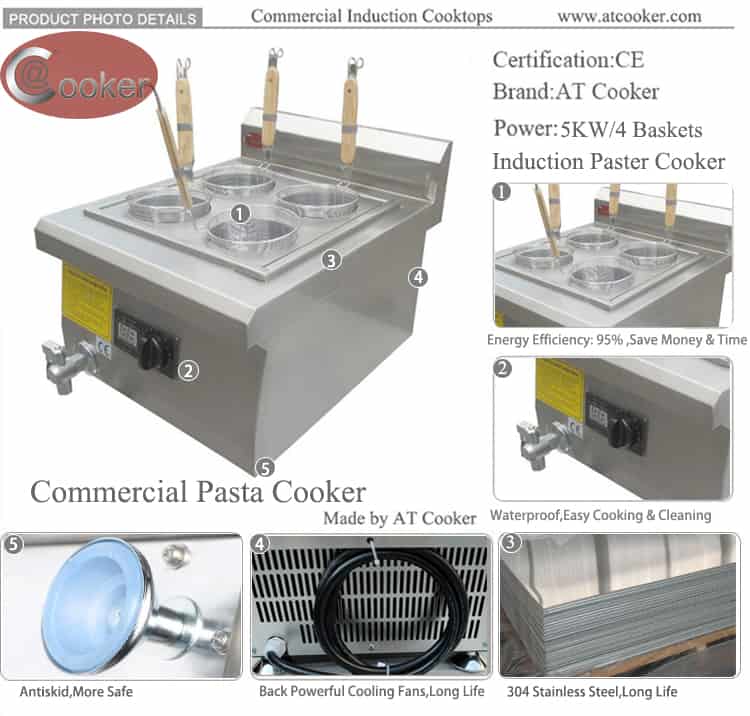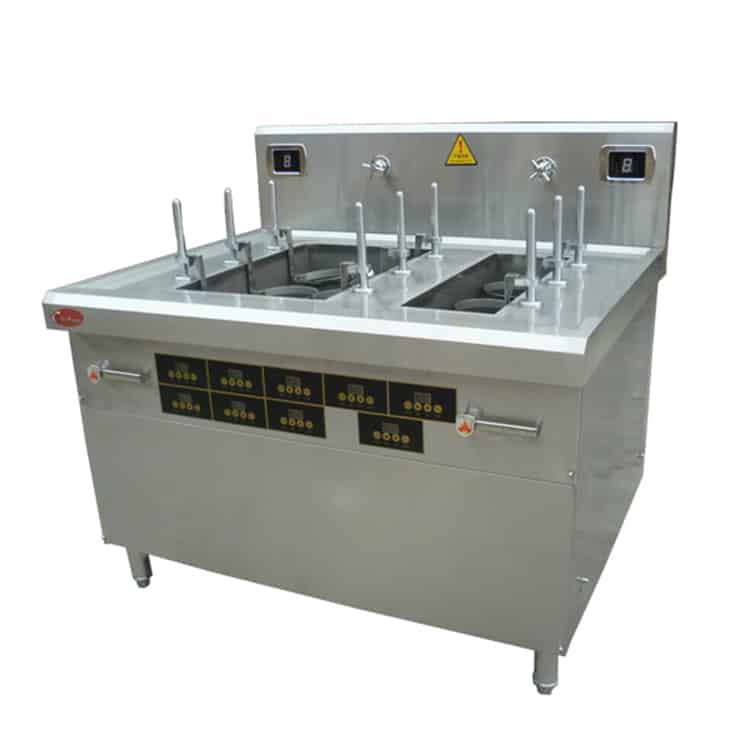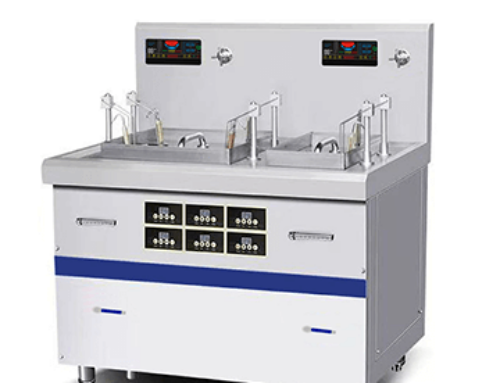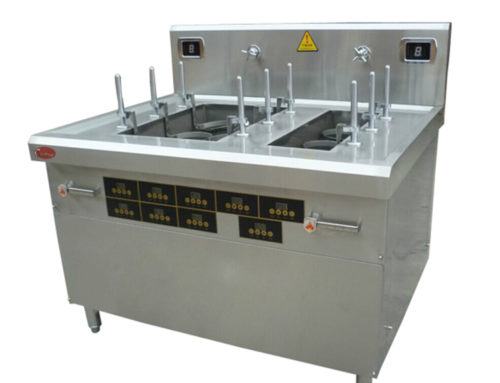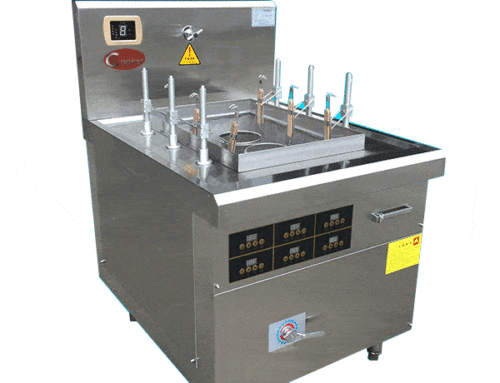Commercial Pasta Boiler Materials: How They Impact Durability & Performance
For commercial kitchens, the materials of a pasta boiler commercial directly determine its lifespan, maintenance costs, and cooking quality. AT Cooker’s 2024 analysis of 500+ commercial kitchen equipment failures found that 48% of pasta boiler issues stemmed from poor material choices—like thin steel that warps or non-food-grade metals that corrode. This guide breaks down the most common materials used in restaurant pasta boiler models, how they affect durability and performance, and why AT Cooker prioritizes premium materials (like 304 stainless steel) in our commercial pasta cooker lineup (including the best-selling ATT-APSD-A41 and ATT-APST-C5B).
1. Stainless Steel: The Gold Standard for Commercial Pasta Boilers
Stainless steel is the most widely used material for pasta boiler commercial units—and for good reason. It offers unmatched durability, corrosion resistance, and compliance with food safety standards, making it ideal for the high-moisture, high-use environment of commercial kitchens.
AT Cooker uses stainless steel for 95% of our pasta boiler components (tanks, frames, baskets) because it addresses the two biggest pain points for restaurant owners:
- Corrosion resistance: Stainless steel resists rust and staining from water, pasta sauce, and cleaning chemicals. Our customer data shows stainless steel pasta boilers last 7–10 years, vs. 3–4 years for aluminum or coated steel models.
- Hygienic performance: Smooth stainless steel surfaces don’t trap food particles or bacteria, and they wipe clean in 30 seconds—critical for passing health inspections. A Italian restaurant chain in Chicago reported 50% faster cleaning times after switching to AT’s stainless steel pasta boilers.
Unlike budget brands that use low-grade stainless steel (like 201 series, which rusts in 2–3 years), AT Cooker exclusively uses 304 stainless steel— the food-grade standard for commercial equipment.
2. 304 Stainless Steel: Preferred for Food-Grade Quality & Ease of Cleaning
Within the stainless steel family, 304 stainless steel is the top choice for commercial pasta boiler models. It contains 18% chromium and 8% nickel—elements that enhance its resistance to corrosion and make it safe for direct food contact (compliant with FDA and NSF standards).
Key benefits of 304 stainless steel for pasta boilers:
- Food safety: No leaching of metals into water or pasta, even when heated to 212°F (boiling point) for hours. This is non-negotiable for commercial kitchens, where cross-contamination risks are high.
- Easy cleaning: The smooth surface repels burnt-on pasta and sauce—AT Cooker’s 304 steel tanks clean with just a damp cloth and mild detergent, no scrubbing needed. A café in Portland noted: “Our old pasta boiler had a rough interior that trapped food—now we clean the AT unit in 2 minutes after service.”
- Longevity: 304 stainless steel resists pitting from salt (used in pasta water) and acidic sauces (like marinara). AT’s ATT-APSD-A41 electric commercial pasta boiler (made with 304 steel) has a 92% customer retention rate after 5 years—meaning 92% of buyers report no signs of corrosion.
Budget brands sometimes use 201 stainless steel (which has less nickel) to cut costs, but this material rusts quickly when exposed to salt water. A restaurant owner in Miami learned this the hard way: “We bought a 201 steel pasta boiler for $300 less— it rusted in 18 months. AT’s 304 steel unit is 3 years old and still looks new.”
3. Aluminum Components: Faster Heat Conduction but Less Durable
Aluminum is occasionally used in small components of pasta boiler commercial models (like heating element housings) for its fast heat conduction—aluminum transfers heat 3x faster than stainless steel. However, it’s rarely used for tanks or frames due to poor durability.
Trade-offs of aluminum in pasta boilers:
- Pros: Faster heat-up times—aluminum components can reduce a boiler’s preheat time by 1–2 minutes, useful for peak rushes. Some budget brands use aluminum heating cores to market “fast-boiling” models.
- Cons: Prone to corrosion and warping—aluminum reacts with salt water, forming a white oxide layer that flakes off into food. It also warps at high temperatures (over 300°F), reducing the boiler’s lifespan to 2–3 years. AT Cooker avoids aluminum in critical components (like tanks) but uses it in non-food-contact parts (e.g., wiring housings) for heat efficiency.
A catering company in Texas tested both aluminum and stainless steel pasta boilers: “The aluminum model heated fast, but it warped after 6 months. We switched to AT’s stainless steel unit—heats slightly slower, but it’s still going strong after 4 years.”
4. Heavy-Gauge Stainless Steel: Enhances Structural Strength & Longevity
Gauge (thickness) of stainless steel matters as much as the type—heavy-gauge steel (thicker material) provides better structural strength and resistance to warping. For commercial pasta boiler models, AT Cooker uses 1.2mm–2.0mm heavy-gauge 304 stainless steel for tanks and frames, vs. 0.8mm thin-gauge steel used by budget brands.
Why heavy-gauge steel is critical:
- Warp resistance: Thin steel warps when exposed to repeated heating and cooling (e.g., filling the tank with cold water after boiling). Heavy-gauge steel maintains its shape—AT’s ATT-APST-C5B countertop boiler (1.5mm steel) shows less than 1mm of warping after 5 years of daily use.
- Load capacity: Thicker steel supports heavier weights, like 10+ pounds of pasta and water. The ATT-APSD-A41 pasta 2 bay boiler commercial model (2.0mm steel) can hold 40L of water per bay without bending—critical for high-volume kitchens.
- Impact resistance: Heavy-gauge steel withstands accidental bumps from carts or staff—thin steel dents easily, creating crevices that trap food and bacteria. A hotel kitchen in Las Vegas reported: “Our AT pasta boiler got hit by a food cart—no dent, no damage. Our old thin-gauge unit would have been ruined.”
The extra thickness adds minimal weight (2–3 pounds) but extends the boiler’s lifespan by 3–5 years. A chain restaurant in Chicago calculated: “Spending $200 more on heavy-gauge steel saves us $800 every 3 years in replacement costs.”
5. Non-Stick Coatings: Improves Performance & Ease of Pasta Removal
Non-stick coatings (like PTFE or ceramic) are applied to pasta boiler baskets (not tanks) to prevent pasta from sticking, making removal faster and reducing waste. AT Cooker uses food-grade ceramic non-stick coatings on all included baskets—safer and more durable than traditional PTFE coatings.
Benefits of non-stick baskets:
- Reduced waste: Sticky pasta leads to 5–10% waste (pasta breaks when removed). Non-stick baskets cut this to less than 2%—a family-style restaurant in Boston saves 20 pounds of pasta monthly.
- Faster service: Pasta slides out of non-stick baskets in seconds, vs. 30+ seconds of scraping. During peak rush, this saves 1–2 minutes per order.
- Durability: AT’s ceramic coating resists scratching from metal tongs (common in commercial kitchens) and lasts 2–3 years, vs. 6–12 months for PTFE coatings.
Non-stick coatings are not used on tanks because they can peel off with frequent cleaning. AT Cooker’s tanks rely on smooth 304 stainless steel to prevent sticking—no coating needed.
“We used to lose so much pasta to sticking—our old baskets were a nightmare. AT’s non-stick baskets changed that—pasta slides right out, and we save $50/month on pasta. The coating still looks new after a year of daily use!” — Sofia, Italian Restaurant Owner
6. High-Quality Welds: Prevent Leaks & Extend Lifespan
Even the best stainless steel fails with poor welding—leaks in tank seams are a top cause of commercial pasta boiler downtime. AT Cooker uses TIG (Tungsten Inert Gas) welding for all tank seams— a precise method that creates strong, seamless joints.
Why weld quality matters:
- Leak prevention: TIG welds are airtight and watertight, preventing water from seeping into the boiler’s internal components (like heating elements). Budget brands use MIG welding (faster but less precise), which often develops leaks within 1–2 years. A diner in Seattle said: “Our old pasta boiler leaked after 18 months—we had to shut down service to fix it. AT’s unit is 3 years old, no leaks.”
- Corrosion resistance: Poor welds trap water and food particles, leading to rust. TIG welds are smooth and easy to clean, so no corrosion forms. AT’s welds are also passivated (a chemical treatment) to enhance rust resistance.
AT Cooker tests every pasta boiler for leaks at 1.5x operating pressure before shipping—ensuring no defects reach customers. A catering company in Florida appreciated this: “We received our AT boiler during a busy week—no leaks, no issues. We couldn’t say that about our last one.”
7. Thermal Shock-Resistant Materials: Maintain Performance Under Rapid Temperature Changes
Commercial pasta boilers face frequent temperature swings—filling a hot tank with cold water, or adding cold pasta to boiling water. Materials that resist thermal shock (cracking from sudden temperature changes) maintain performance and avoid costly repairs.
AT Cooker’s 304 stainless steel and ceramic components are thermal shock-resistant:
- Stainless steel tanks: Can handle temperature changes from 70°F (cold water) to 212°F (boiling) without cracking—tested to 10,000+ cycles.
- Ceramic-coated baskets: Resist cracking when moved from boiling water to cold plates—unlike glass or thin metal baskets.
Budget materials (like low-grade steel or plastic) crack under thermal shock— a café in Denver had a plastic basket handle break when lifting it from boiling water. “AT’s ceramic-coated baskets have metal handles—no cracks, no breaks. We use them 50+ times a day,” said the café owner.
8. Material Impact on Energy Efficiency & Heat Retention
Materials directly influence how efficiently a pasta boiler commercial uses energy. Heavy-gauge stainless steel and thick metal walls retain heat better, reducing the need for frequent power boosts—critical for lowering monthly utility bills.
AT Cooker’s material choices for efficiency:
- Thick steel walls: 1.5mm–2.0mm walls retain heat 30% better than thin steel— the ATT-APSD-A6 electric boiler uses 15% less power than a thin-gauge model with the same capacity.
- Insulated frames: All AT pasta boilers have insulated stainless steel frames that prevent heat loss—saves an extra 5–8% on energy costs. A hotel in Las Vegas calculated: “Our 4 AT pasta boilers save us $220/month on electricity vs. our old uninsulated units.”
Aluminum, while a fast conductor, retains heat poorly—meaning aluminum components require more power to maintain boiling temperature. This is why AT Cooker avoids aluminum in tank walls.
9. Material Comparison: Which Is Best for Commercial Use?
To help you choose, here’s a comparison of common restaurant pasta boiler materials:
| Material | Durability (Lifespan) | Performance (Heat/Non-Stick) | Maintenance Cost | Ideal For |
|---|---|---|---|---|
| 304 Stainless Steel (Heavy-Gauge) | 7–10 years | Good heat retention, no sticking (tanks) | Low ($50–$100/year) | All commercial kitchens (high/low volume) |
| 201 Stainless Steel (Thin-Gauge) | 2–3 years | Poor heat retention, prone to sticking | High ($200+/year) | Short-term use (pop-ups, temporary kitchens) |
| Aluminum (Components) | 3–4 years | Fast heat conduction, poor retention | Medium ($150–$200/year) | Non-critical parts (wiring housings) |
| Ceramic-Coated Baskets | 2–3 years | Excellent non-stick, heat-resistant | Low ($30–$50/year) | All commercial pasta boilers (basket配件) |
For 95% of commercial kitchens, 304 stainless steel (heavy-gauge) is the best choice—it balances durability, performance, and low maintenance.
AT Cooker Suggestions
When buying a pasta boiler commercial, always ask for two things: material type (insist on 304 stainless steel, not 201) and gauge (1.2mm+ for tanks). Avoid models with aluminum tanks or thin-gauge steel—they’ll cost more in replacements and maintenance. For baskets, choose ceramic non-stick coatings over PTFE for durability.
AT Cooker’s commercial pasta cooker models are built with these principles in mind—every unit uses 304 heavy-gauge stainless steel, TIG welds, and ceramic non-stick baskets. Whether you need a countertop model (ATT-APST-C5B) or a pasta 2 bay boiler commercial (ATT-APSD-A9), our materials ensure long-lasting performance and low costs.
Get a Material Guide for Commercial Pasta Boilers
Share your kitchen’s needs (volume, budget), and we’ll send you a detailed material guide + personalized recommendation for AT Cooker’s pasta boilers.
